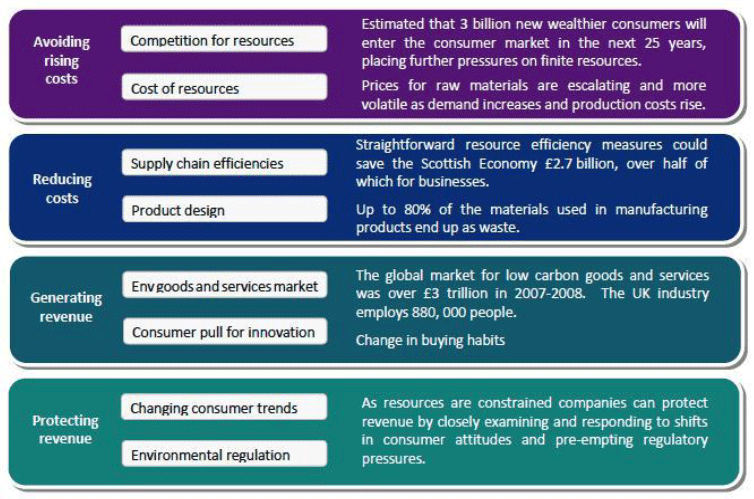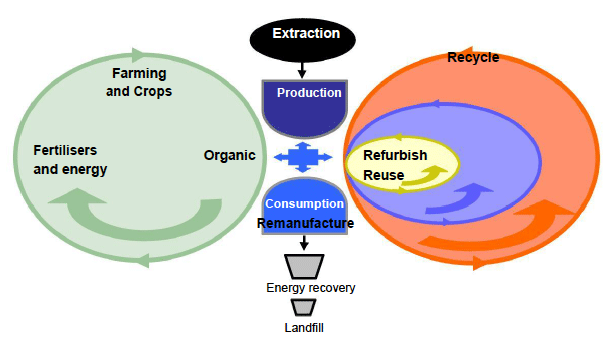Applying the waste hierarchy: guidance
Guidance on applying a waste hierarchy under Section 34 of the Environmental Protection Act 1990.
Introduction
Average commodity prices are higher today than at any time in the past century, and this trend looks set to continue as consumer preferences heighten global demand and competition for a range of resources. For some materials such as copper, indium and rare earth elements supply chain risks are already emerging.
In addition to price rises and increasing market volatility, the environmental costs of resource extraction are likely to increase. For instance, where new supplies of diminishing materials are needed, more energy intensive mining and refining may be necessary, with resultant higher greenhouse gas emissions, detrimental impacts to ecosystems and increased demands on water supplies.
Reliable access to a sustainable pool of high quality resources is essential for our economy to prosper. This means finding new and innovative strategies to conserve materials while also finding ways to cycle materials efficiently back into supply chains.
The Zero Waste agenda is an ambitious programme of change that aims to create an environment where: goods and materials are continually cycled to support the sustainable growth of the Scottish economy, and waste is progressively designed out.
The waste hierarchy forms part of the blueprint to achieving this vision and moving our economy away from a linear model of production, consumption and disposal towards an economy that maximises the economic potential creating cycles for materials to flow continually through our economy, without the need to rely on new raw materials that are becoming increasingly costly, both financially and environmentally (Figure 1).
Figure 1: Economic opportunities from treating waste as a resource

This is about much more than simply getting better at end of life recycling. The less a product has to be changed in reuse, refurbishment and remanufacturing and the faster it returns to use, the higher the potential savings on the shares of material, labour, energy, and capital embedded in the product and on the associated mix of environmental impacts.
Figure 2: The Circular Economy

Applying the waste hierarchy is therefore not simply about limiting impacts to our climate and environment, it can help save businesses money and create new opportunities for our economy to grow. A recent UK study estimated around 2.3% of Gross Domestic Product ( GDP) could be saved through straightforward action to use goods and materials more efficiently and generating less waste. In 2010 that would have meant more than £2.7bn of potential savings to the Scottish economy. Over half of these savings (£1.4bn) could be made by businesses.
Further information on the Scottish Government’s actions to prevent waste and use our resources more efficiently can be found in our consultation on Safeguarding Scotland’s Resources: A Programme for the Efficient Use of Our Materials.
Contact
There is a problem
Thanks for your feedback